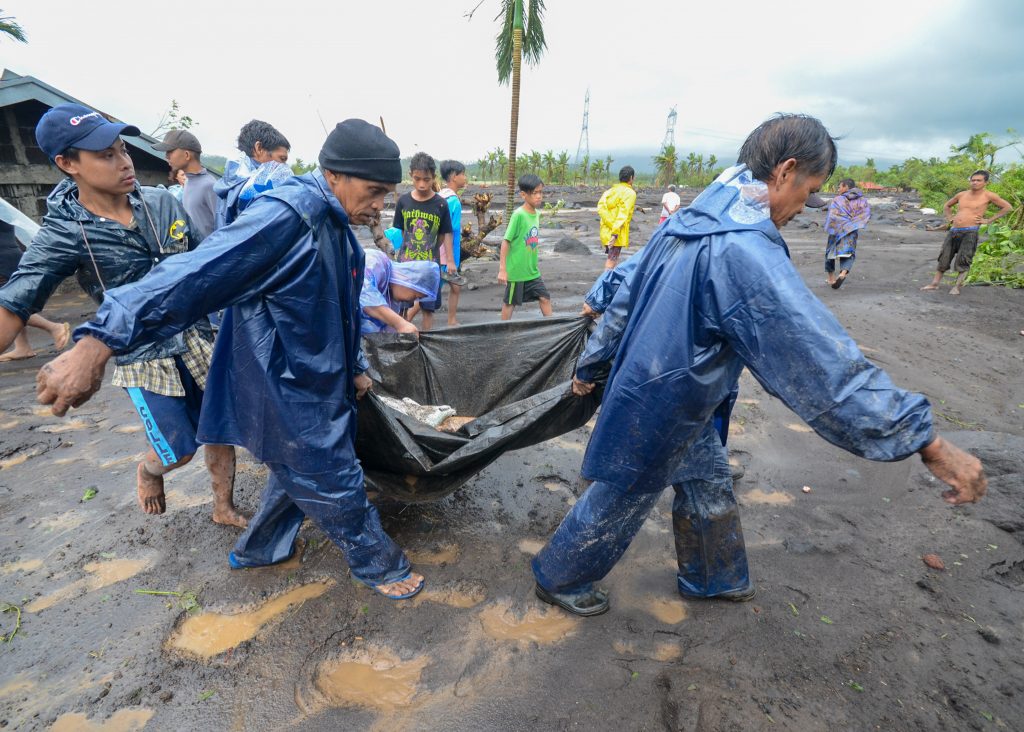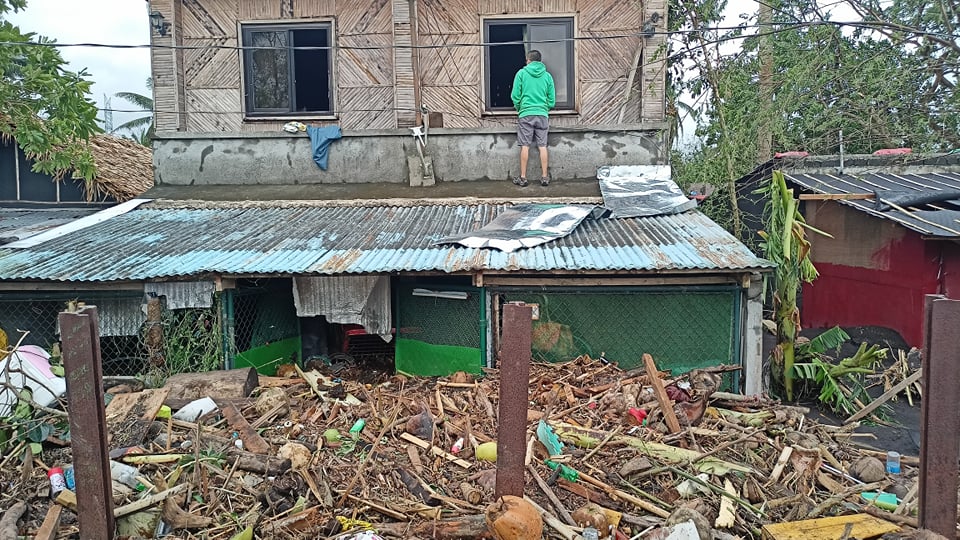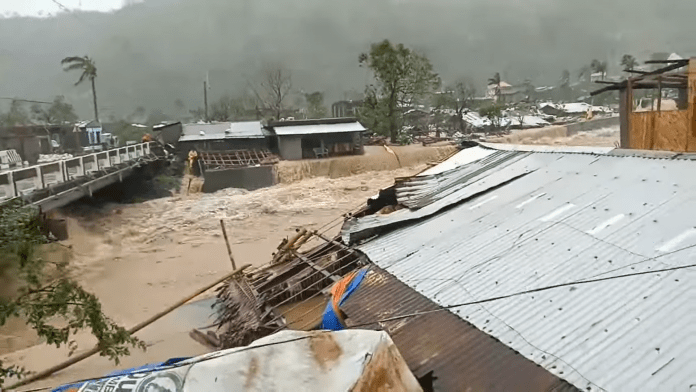Typhoon Rolly’s 300-kilometer winds arrived about three in the morning in Francisco, Guinobatan town, in Albay province, and ended sometime 10 a.m.
Where normally a storm would last for only two-to-three hours, Rolly’s seven-hour rampage over Guinobatan left the whole community buried under tons of debris and seven-to-eight feet of mud, floodwater, and sand suspected to have come from nearby quarrying sites.
The mixture of mud and sand soon turned to rock-hard earth, making any rescue effort to save the hundreds of homes now lay buried underneath it well-nigh impossible. The area, in the next several hours, saw itself isolated from nearby towns and municipalities. One can only reach it by foot.
“It’s possible that underneath all this mud and sand lay bodies of people… and sad to say, there are rumors of looting going on,” said Bicol artist Djai Tanji in a post via Messenger.
Djai Tanji is a Bicol artist residing in Legazpi City, a good thirty minutes to Francisco, Guinobatan. As soon as the rains subsided, she decided to take a trip to the area where her boyfriend lives.
Immediately she saw the extent of the devastation and took some photographs. Homes lay inundated in several feet of floodwater while outside, a thick mantle of hardened mud and huge boulders from quarrying sites had blocked all entrances to and exits from the villages.
“When the typhoon came, the people rushed to the second floor of my boyfriend’s house hoping the structure would not collapse,” she said.
“The soil had become so soft due to the rains that they thought the ground would not hold. When morning came, the whole first floor was buried underneath mud, sand and debris. Only the second floor remained visible. There was nothing they could do to save anything.”

Outside, an overspill of various debris—from fallen coconut trees to electric posts—littered the ground as far as they eyes could see. Many tried to salvage the little they could by digging through the stone-hard mud.
“The local government started bringing in their bulldozers the next day. I was told that some bodies were hoisted out of the rubble, some were neighbors of my boyfriend. I don’t know how many died that night, but I am sure there were some. Some might still be buried under the mud, who knows?
“There were rumors of looting, too, which is why the houses are being guarded by the owners. What is really sad is how some local government officials are using this tragedy to promote themselves. Imagine bulldozers carrying tarpaulins of the names of officials behind the clearing and rescue operations. The people are so enraged that they are booing them out of the site.”
As for the village of Joroan, which was situated near the bridge, the people feared that the water and mudflow might soften the soil and drag houses into the river and, thereafter, the open sea.
“That video was taken from my grandfather’s house near the bridge in Joroan,” Djai Tanji said.
“A barangay official who sought shelter inside my grandfather’s home went to the roof and took the liberty of taking a video of the river at the height of typhoon Rolly. The video was later shared by the Municipality of Tiwi.

On November 2, President Duterte conducted an aerial inspection of the said community.
According to several sources, he ordered the Department of Public Works and Highways (DPWH) and the Department of Environment and Natural Resources (DENR) to investigate quarrying operations in Guinobatan, Albay.
According to Djai Tanji, huge mounds of sand from the quarry sites disappeared shortly after the typhoon, leading residents to suspect that the sand mixed with floodwater and mud came from the site.
At the time of this writing, non-government organizations and local government units have started clearing and rescue operations in the area.









